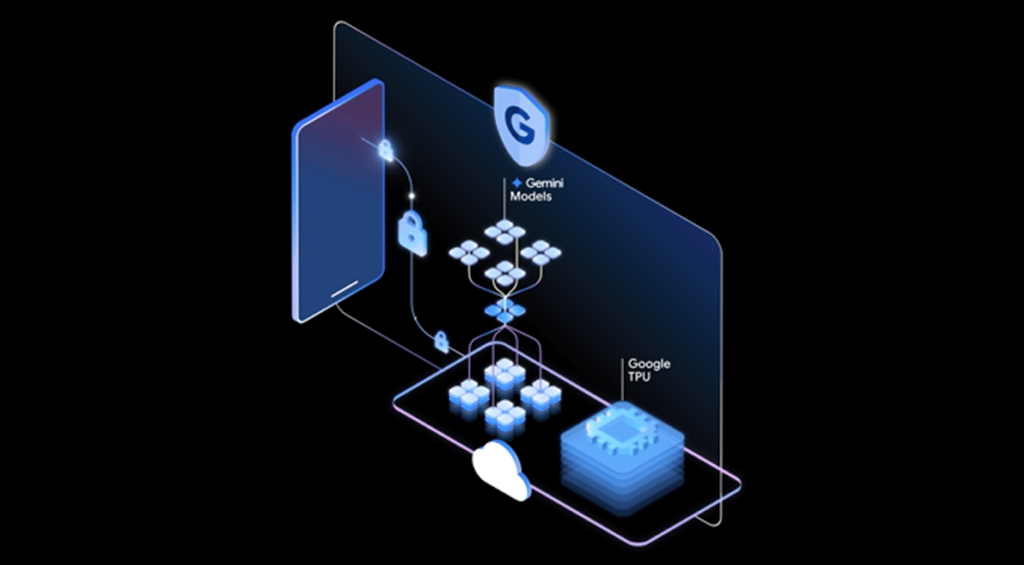Datamation content and product recommendations are
editorially independent. We may make money when you click on links
to our partners.
Learn More
Stream analytics software analyzes current and historical data as it travels across networks, into and out of databases and through application programming interfaces (APIs).
As a key component of data analytics, this ability to monitor and understand data in real time is at the center of today’s digital enterprise. But achieving success is a growing challenge, particularly as the volume of data grows. Crucial to the success of any Big Data project, stream analytics monitors events and information exchanges in real time. They provide alerts and notifications when certain conditions take place.
As a result, stream analytics software are useful for a wide array of enterprise data tasks. These include geospatial analysis, understanding social media streams, tying together telemetry data from IoT devices, predictive analytics, spotting fraud, real-time point of sale and inventory analysis, and remote monitoring and maintenance tasks.
Some tools offer visualization features that allow users to view complex relationships among systems, connected devices and various types of data. Many rely on widely used frameworks such as Apache Kafka, SQL and JavaScript. The common theme for all stream analytics systems is that their data processing engines are designed to handle enormous volumes of data streaming from multiple sources simultaneously. Stream analytics is particularly powerful when it operates in the cloud.
How to Select the Best Stream Analytics Software For Your Company
There are several crucial factors to consider when selection a stream analytics platform. These include:
Compatibility:It’s critical to survey enterprise data sources, map out connection points for applications and systems, and thoroughly understand what data streams are important—and for what purposes. Building an end-to-end pipeline requires support for coding languages, database formats and more.
Features: An organization should ensure that the package offers the right set of features, and they are robust and flexible enough to provide optimal results. Key features frequently include visualization dashboards, rich reporting capabilities, integrated development tools, data preparation and enrichment capabilities, and automation through machine learning.
Performance and reliability: Not only must a stream analytics software package operate with ultra-low latency, it has to provide the flexibility and scalability to add, subtract and change inputs and connections points—including message brokers and outside processing engines. Some packages also have built-in recovery capabilities.
Cost: It’s wise to view stream analytics in the context of total cost of ownership. Some packages now operate on a utility model—you pay for what you use and the streaming units you consume. Others use a more conventional licensing approach.
Security and compliance:Look for a package that incorporates incoming and outgoing encryption, as well as processing in memory so that data isn’t stored with a cloud provider. Equally important: ensure that a package adheres to all regulatory and compliance standards. Look for compliance certifications.
Top Stream Analytics Software
Here are ten leading stream analytics solutions to consider:
Jump to:
Amazon Elasticsearch Service
The managed service delivers a straightforward way to deploy, operate and scale Elasticsearch clusters in AWS cloud. It provides direct access to the Elasticsearch APIs so that existing code and applications work seamlessly with the service. The platform offers an open-source search and analytics engine that focuses on use cases such as log analytics, real-time application monitoring, and clickstream analysis.
Pros
- Users can set up and configure a domain in minutes. It supports programmatic access through AWS CLI or the AWS SDKs.
- The platform offers a high level of scalability, including support for numerous CPU, memory and storage configurations.
- Offers up to 3 PB of attached storage.
- Provides strong security, including identity and access controls; encryption of data at rest and in motion; index-level, document level and field-level security; and audit logs.
Cons
- The platform may present a formidable learning curve.
- Search queries and indexing can be difficult. If these processes aren’t set up correctly they can impact performance and results.
- Some users find the interface daunting and have trouble customizing the service to the extent they desire.
Amazon Kinesis
The platform collects and processes large data streams in real-time. Users can create applications that read data as records. These applications use the Kinesis Client Library to run Amazon EC2 instances. Kinesis supports dashboards, dynamic alerts, dynamic pricing and advertising strategies, along with many other functions. It supports data management across other AWS services.
Pros
- Supports live metrics and reporting.
- Accommodates complex stream processing, including aggregating multiple streams. This allows more robust downstream processing.
- Kinesis offers a flexible approach, including support for data sources pushing data directly into a stream.
Cons
- Can present a formidable learning curve. Some users also report difficulty with documentation.
- Can be costly and require significant input if an organization has a large number of data sources and requires a larger number of shards.
- Some users report that extended fan-outs are difficult to manage.
Azure Event Hubs
Microsoft bills Azure Event Hubs as a “scalable event processing service that ingests and processes large volumes of events and data, with low latency and high reliability.” The big data streaming platform and event ingestion service processes millions of events per second, typically in an Azure cloud. It delivers low latency and strong integration with connected data sources.
Pros
- Uses the Kafka protocol to configure existing Apache Kafka applications to talk to Event Hubs. It also supports .NET, Java, Python, JavaScript.
- Azure Event Hubs is a highly scalable framework that can extend to terabytes. An auto-inflate feature simplifies and streamlines scaling.
- Strong support for telemetry sharing, user telemetry processing and strong transaction processing, with live dashboards.
Cons
- The platform may require custom coding to support more advanced functionality.
- Some users report difficulty with the interface and find the learning curve difficult.
- Non-Azure cloud users may face increased difficulty using certain functions, including scheduling.
Azure Stream Analytics
The solution relies on a complex event processing engine to ingest high volumes of data from diverse sources in real-time. It extracts data from devices, sensors, clickstreams, social media feeds, and enterprise applications. This makes it ideal for numerous scenarios, ranging from fleet management and predictive maintenance to point of sale and IoT.
Pros
- The platform can run in the cloud or on the intelligent edge. It uses the same tools and query language for both.
- Azure Stream Analytics delivers a high level of configurability and scalability.
- It integrates seamlessly with various Azure services and adds them to menus automatically.
Cons
- Doesn’t support auto-scaling. Users must configure streaming units manually.
- Some users report crashes when the service encounters invalid and malformed data sets.
- Lacks some of the advanced features required for more advanced IoT implementations.
Confluent
The vendor offers both fully managed and self-managed service options within an open-source framework. A SQL base allows user to build streaming analytics applications that monitor and manage data and events in real-time. The platform ties into the Apache Kafka ecosystem to support highly complex tasks across numerous industries and business environments.
Pros
- Provides powerful tools, features and capabilities to manage Kafka clusters.
- Strong end-to-end visibility and manageability.
- Powerful scaling functions due to numerous built-in connectors.
Cons
- A complex platform that can present learning challenges.
- Some users report difficulty testing within the platform.
- Users say that role-based-access controls (RBAC) present some challenges.
Google Cloud Pub/Sub
The asynchronous messaging service is designed to decouple services that produce events from services that process events. It’s frequently used as messaging-oriented middleware or for event ingestion and delivery for streaming analytics pipelines.
Pros
- High availability and consistent performance at scale.
- Ease of configuration and a high level of flexibility.
- Strong functionality along with tight integration with numerous other products and data services.
Cons
- Some find the user interface confusing and have difficulty managing certain features.
- Can be pricey for certain types of implementations and use cases. Some users find the pricing framework confusing.
- Can be difficult to use without customizations.
IBM Streaming Analytics
IBM Streaming Analytics is equipped to analyze and correlate a broad range of streaming data, including unstructured text, video, audio, geospatial, and sensor data. It features real-time analysis of data in motion. It can analyze millions of events per second, enabling sub-millisecond response times. It’s available with IBM Cloud Pak for Data-as-a-Service.
Pros
- Receives high user ratings for capacity, flexibility and scalability.
- Easy to integrate with other IBM cloud services.
- Offers a large set of optimized and tested toolkits.
- Active developer community that contributes packages and solutions.
Cons
- Numerous users report that documentation is sometimes lacking.
- Can be expensive to operate in production environments.
- Some users find it challenging to write complex business rules into the platform.
Kibana
The open-source data visualization dashboard is designed to handle Elasticsearch data and navigate the elastic stack. It reaches across documents and data sets to deliver numerous visualization formats, including histograms, line graphs, pie charts, and sunbursts. It also accommodates location analysis, time series models and machine learning.
Pros
- Kibana is flexible and supports a high level of customization, including custom actions.
- Delivers role-based and highly granular access controls.
- Offers robust dashboards and built-in drill-down features that allow users to explore data in deeper ways.
Cons
- The platform trails competitors for ease of setup and use.
- Can consume a high level of computing resources in certain situations.
- Search filters and notifications can be limited within certain scenarios.
Lenses
Lenses offers a developer workspace for building and operating real-time applications on Apache Kafka Connect and Kubernetes infrastructure. The platform is available on premises and in the cloud. It supports SQL-based real-time applications with centralized schema management.
Pros
- Lenses receives high marks from users for ease of use and quality of support.
- It offers a secure portal that allows users to configure, deploy and manage hundreds of Kafka Connect-compatible connectors, with integrated error handling.
- Includes Google-like search and automatic data discoverability of data entities and metadata generated by your real-time applications.
Cons
- Trails other stream analytics vendors for ease of setup.
- Some users would like to see a richer set of features and capabilities for supporting DataOps.
TIBCO Streaming
TIBCO Streaming delivers real-time enterprise-grade streaming analytics that reaches across the organization and out to the IoT. The cloud-ready solution supports the development of affordable real-time applications. It analyzes millions of events per second and provides ultra-fast continuous querying capabilities.
Pros
- Handles highly complex data transformations.
- Offers powerful user controls to manage ad-hoc queries, control and set business logic, define rules and models, configure charts, change the panel layout, create and manage alerts, and more.
- Offers more than 150 pre-built adapters and visualization options for Kafka and numerous other formats.
- Delivers full cloud-enablement with support for Docker.
Cons
- Some users report a lack of support for managing third party library dependencies.
- Users report that security controls could be more robust.
- May lack flexibility for certain configurations, such as reusing modular components.
Stream Analytics Software Comparison Table
| Analytics Vendor |
Pros |
Cons |
| Amazon Elasticsearch Service |
· Fast Setup
· Highly scalable
· Large storage capacity
· Strong security controls |
· Learning curve
· Queries and indexing can be difficult
· Interface can be challenging
|
| Amazon Kinesis |
· Supports live metrics and reporting
· Handles highly complex stream processing
· Flexible |
· Learning curve
· Can be pricey
· Large implementations and fanouts can be difficult to manage |
| Azure Event Hubs |
· Strong support for Kafka and development languages
· Highly scalable with large capacity
· Strong telemetry support
|
· Advanced functionality may require custom coding
· Interface can be daunting
· Limited functionality for non-Azure users
|
| Azure Stream Analytics |
· Runs in the cloud or on the edge
· High level of configurability and scalability
· Integrates seamlessly with other Azure modules and services |
· Lacks auto-scaling functionality
· Crash-prone when it encounters invalid and malformed data
· Lacks advanced features required for IoT projects |
| Confluent |
· Powerful features and tools
· Strong end-to-end visibility and manageability
· Powerful scaling functions
|
· Complexity of platform
· Testing within the platform may be challenging
· RABCs can prove difficult
|
| Google Cloud Pub/Sub |
· High availability and consistent performance at scale
· Ease of configuration
· Flexible
· Robust functionality |
· Expensive for certain uses and configurations
· May require additional customization
· Some find the user interface difficult |
|
IBM Streaming Analytics
|
· Excels in capacity, flexibility and scalability
· Tight integration with other IBM cloud services
· Robust toolkit
· Active developer community |
· Users report documentation is subpar
· Can be challenging to operate in production environments
· Doesn’t always support complex business rules
|
|
Kibana
|
· Highly flexible and customizable
· Strong role-based access controls
· Excellent dashboards and drill down capabilities |
· Can be difficult to set up and use
· May heavily consume computing resources
· Limited search filters and capabilities within certain scenarios |
|
Lenses
|
· Ease of use
· Strong support
· Robust management portal
· Strong search capabilities
|
· Setup can be challenging
· Users say they would like to see richer features for DataOps
|
| Tibco Streaming |
· Handles highly complex data transformations
· Strong support for business logic and user controls
· Full cloud enablement with Docker support |
· Lacks support for third party dependencies
· Users report that some security features lacking
· Lacks flexibility for reusing modular components |









